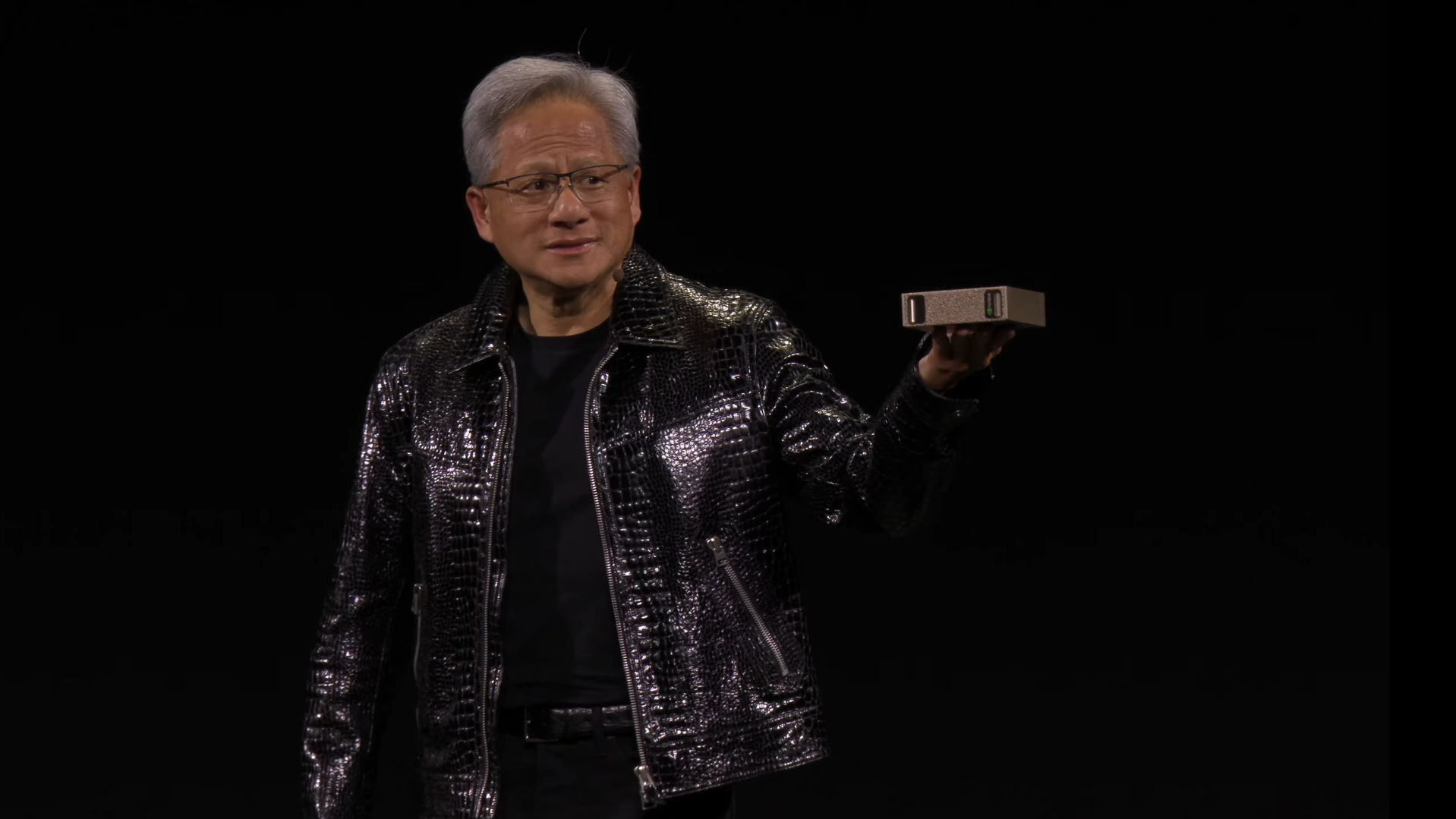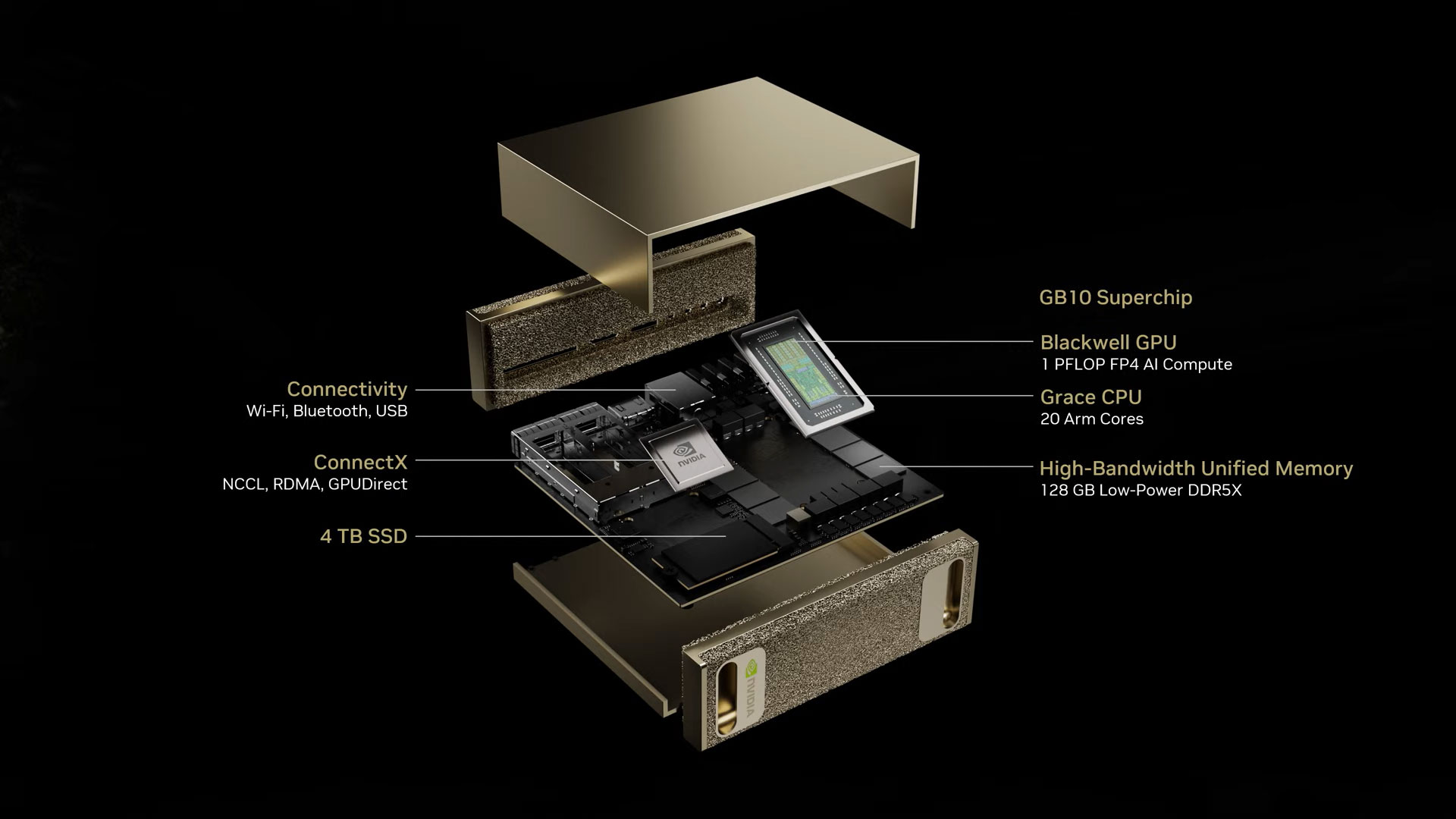
Nvidia announced many new innovations in its 90 minute long CES keynote/victory lap, but the intriguing closer was its Project Digits AI supercomputer. Arriving in May, Project Digits (name apparently subject to change) will bring 1 PFLOPS of FP4 floating point performance in a form factor which fits snugly in the hands of Nvidia boss Jensen Huang.
Project Digits was conceptualized with the same concept as Nvidia's DGX 100 servers; to bring a ready-made AI supercomputer solution to end users without the infrastructural concerns of a full supercluster solution. Where DGX 100 fits in server racks, Project Digits fits on the desktop with a similar footprint to a Mac Mini.
Digits is powered by the GB10 Grace Blackwell Superchip, a collaboration between Nvidia and MediaTek. Nvidia's Blackwell GPU, offering the touted 1 petaFLOP of performance, sits on a die with a 20-core Grace CPU thanks to NVLink C2C. The superchip is joined on the board by 128GB of LPDDR5X memory from Micron and a 4TB NVMe SSD. An Nvidia ConnectX smart network adapter also sits in the computer, providing NCCL, RDMA, and GPUDirect support.

Arm and Nvidia both seem excited about the Grace Blackwell collaboration. "The NVIDIA Grace CPU features our leading-edge, highest performance Arm Cortex-X and Cortex-A technology, with 10 Arm Cortex-X925 and 10 Cortex-A725 CPU cores," shared Arm in its own press release. "Our collaboration with Arm on the GB10 Superchip will fuel the next generation of innovation in AI," adds Ashish Karandikar, Nvidia's VP of SoC Products.
This extreme power packed into a tiny footprint means that a single Project Digits unit can run up to 200-billion-iteration AI large language models. For context, OpenAI's GPT-4o model is a 12-billion-iteration model, meaning Project Digits could run and configure ChatGPT locally. When paired with another unit, in "double Digits", the support increases to 405B models.
End users looking for local access to a larger AI computing solution will be the target audience for Project Digits. The high-power machine is tuned for AI, on the hardware and software ends. Project Digits comes with Nvidia's full AI Enterprise software stack pre-installed; libraries, frameworks, and infrastructure management tools to connect with and manage a more expansive AI solution.
Digits can serve as a box to communicate with a cloud solution via one's PC, or can be used as a Linux workstation on Nvidia's DGX OS distro. Users "can prototype, fine-tune, and test models on local Project DIGITS systems," then deploy them on the cloud or local data center infrastructure, says Nvidia's accompanying press release. Enterprises or researchers/students are set to be the target audience per Nvidia's literature, though the truly devoted hobbyist will likely not be stopped from buying the machine.
“AI will be mainstream in every application for every industry," said Huang. "With Project Digits, the Grace Blackwell Superchip comes to millions of developers. Placing an AI supercomputer on the desks of every data scientist, AI researcher and student empowers them to engage and shape the age of AI.” AI was the major focus of Nvidia's CES keynote this year, focusing largely on its most valuable contributions beyond chatbots and image generation.
Those interested in Project Digits need only wait until May, when Digits releases starting at $3,000. From where we sit, Project Digits is a shockingly impressive piece of hardware for its size and continues carrying DGX 100's banner of democratizing AI training. For our recap of the rest of Nvidia's CES keynote, including the $549 RTX 5070, click right here.







